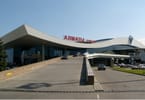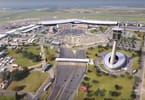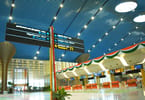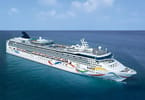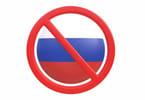As Americans grow accustomed to being connected all the time, more broadband providers are filling in one of the few remaining dead zones—airplanes.
One issue is causing some airlines to hesitate before installing wireless Internet access on all of their aircraft—it remains unclear how many passengers are willing to pay for wireless access in flight.
On Tuesday, US Airways finished installing wireless Internet capability on its 51 Airbus A321 aircraft, narrow-body planes primarily used on transcontinental domestic flights, and is providing the service free to passengers until June 8. If demand is strong enough, the airline will consider expanding the service to some of its other narrow-body Airbus aircraft, according to a US Airways spokesman.
US Airways is using a service called Gogo Inflight Internet from Aircell LLC, an airline wireless Internet provider that has now equipped 930 aircraft for eight airlines with Wi-Fi. That is nearly twice as many planes as the company had equipped a year ago. Aircell’s prices start at $4.95 for flights shorter than an hour and a half and go up to $12.95 on flights longer than three hours. Monthly and 24-hour Internet-access passes are also available on some airlines.
Row 44 Inc., a competitor of Aircell, provides wireless services on a handful of Southwest Airlines’ planes and is planning to expand Wi-Fi to the rest of the airline’s fleet of more than 500 planes over the next 18 months, says Gregg Fialcowitz, president of Row 44.
The basic Row 44 service is free to passengers, but it is limited to certain travel-themed retail sites, games and a service that allows users to text cellphones on the ground. Broader access is available for a fee that passengers pay to Southwest. The airline is experimenting with pricing and a Southwest spokeswoman says such charges will likely settle in the $5 to $12 range, depending on the length of the flight.
“[Airborne-service] pricing is still out of line with other paid Internet sessions,” says Michael Planey, a consultant specializing in in-flight passenger technologies. “The service is being used, I think, by an increasing number of passengers, but it is certainly not a majority of passengers at this point.”
Niels Steenstrup, vice president of marketing for Aircell, concedes that the company’s prices are higher than those for a typical timed Internet session on the ground, but says it costs more to provide wireless on a plane “moving at high speed and high altitude.”
Gogo, the Aircell service, is also available on all AirTran Airways and Virgin America flights, and on some Air Canada, Alaska Airlines, American Airlines, Delta Air Lines and United Airlines flights. The service will be rolled out on some Continental Airlines and Frontier Airlines flights later this year.
WHAT TO TAKE AWAY FROM THIS ARTICLE:
- Niels Steenstrup, vice president of marketing for Aircell, concedes that the company’s prices are higher than those for a typical timed Internet session on the ground, but says it costs more to provide wireless on a plane “moving at high speed and high altitude.
- The basic Row 44 service is free to passengers, but it is limited to certain travel-themed retail sites, games and a service that allows users to text cellphones on the ground.
- The airline is experimenting with pricing and a Southwest spokeswoman says such charges will likely settle in the $5 to $12 range, depending on the length of the flight.









